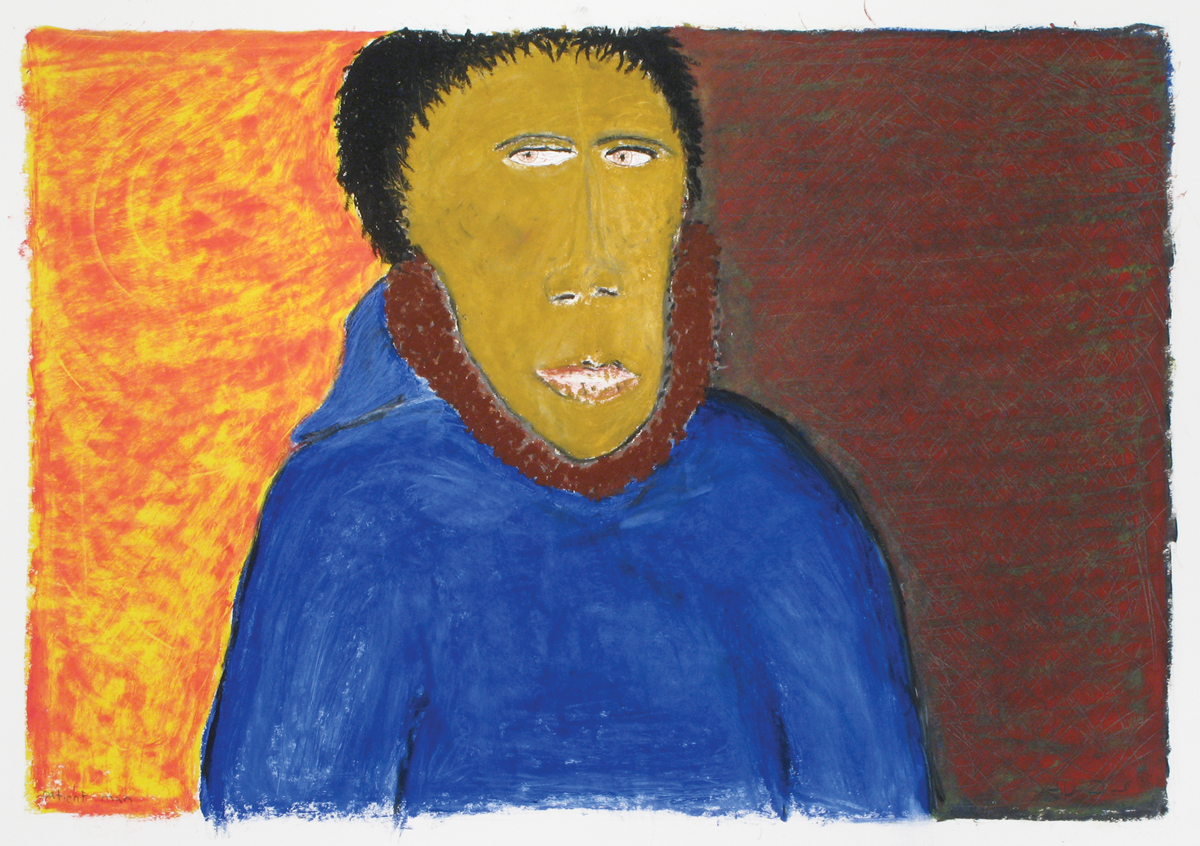
Jutai Toonoo, PATIENT MAN, Cape Dorset, 2007/08, Oil stick, 22 x 30″
Exhibition opened October 22, 2008
This exhibition “breaks ground” in a number of ways.
First, the medium of oil stick is still a very recent innovation for Inuit artists. It was introduced in Cape Dorset in the late 1990s by Montreal-based artist Ludmilla (Mewa) Armata, who coaxed some remarkable work from senior artists such as Mayureak Ashoona and Sheojuk Etidlooie. The materials remained in the Studio and, during a 2006 visit, Montreal master printer Paul Machnik encouraged a number of the emerging artists to begin working in this medium. Oil stick combines the immediacy of a linear sketching tool with the luminous colour palette and extended drying time of traditional oil paint, all without the need for brushes. This was new artistic territory for sculptor Jutai Toonoo, Shuvinai Ashoona and senior graphic artist Kakulu Saggiaktok, among others. Machnik explains: “I tried to reassure them, and encourage them to be painterly.” The results were spectacular.
Since that time, Newfoundland artist Bill Ritchie, a behind-the-scenes hero of the annual Dorset print release, has organized additional workshops in this medium. He now offers oil sticks and large-format artists’ papers whenever he is in the Studio in Dorset. “It’s a real pleasure to be in that room,” Ritchie declares. “These are really contemporary works; this is a direction for the future.”
In this exhibition, “ground” also relates to geography, as these compositions include an exciting array of landscape imagery.
Collectors will recall prints and acrylic wash landscapes by Pudlo Pudlat and a handful of others from the 1970s, and in recent years Shuvinai Ashoona and Annie Pootoogook have each created detailed ink drawings about camp life and the landscape of the Dorset settlement.
But the oil stick medium has inspired several artists to explore new representations of the land; perhaps the quick coverage and blending potential lend themselves to the task. “It’s exciting, really,” Ritchie emphasizes. “The last time I was there, the place was just jammed with people coming in to try it.” These new landscapes contain personal iconographies – markings that brilliantly represent the minute abundance of an Arctic landscape.
New artistic endeavours, such as oil stick drawings, typify the spirit of adventure of the West Baffin Eskimo Co-operative and its ongoing work to continuously expand the artistic boundaries for Inuit art.
